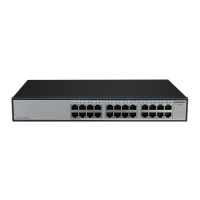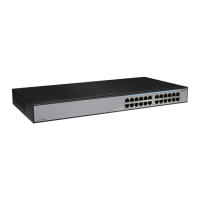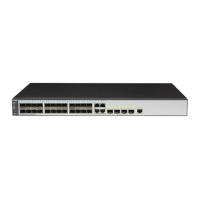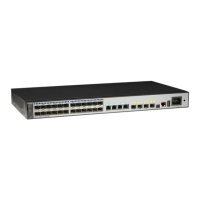Procedure
Step 1 Run:
system-view
The system view is displayed.
Step 2 Run:
rip [ process-id ]
A RIP routing process is enabled and the RIP view is displayed.
Step 3 Run:
import-route bgp [ cost { cost | transparent } | route-policy route-policy-name ]
*
or import-route { { static | direct | unr } | { { rip | ospf | isis } [ process-
id ] } } [ cost cost | route-policy route-policy-name ]
*
The external routes are imported.
----End
10.7.3 Applying Route-Policy to Routes Imported by OSPF
By applying filters, you can control the import of OSPF routes.
Context
Do as follows on the switch that runs OSPF:
Procedure
Step 1 Run:
system-view
The system view is displayed.
Step 2 Run:
ospf [ process-id ]
An OSPF process is enabled and the OSPF view is displayed.
Step 3 Run:
import-route { limit limit-number | { bgp [ permit-ibgp ] | direct | unr | rip
[ process-id-rip ] | static | isis [ process-id-isis ] | ospf [ process-id-ospf ] }
[ cost cost | type type | tag tag | route-policy route-policy-name ]
*
}
The external routes are imported.
----End
10.7.4 Applying Route-Policy to Routes Imported by IS-IS
By applying filters, you can control the import of IS-IS routes.
Context
Do as follows on the switch that runs IS-IS:
S6700 Series Ethernet Switches
Configuration Guide - IP Routing 10 Routing Policy Configuration
Issue 01 (2012-03-15) Huawei Proprietary and Confidential
Copyright © Huawei Technologies Co., Ltd.
612

